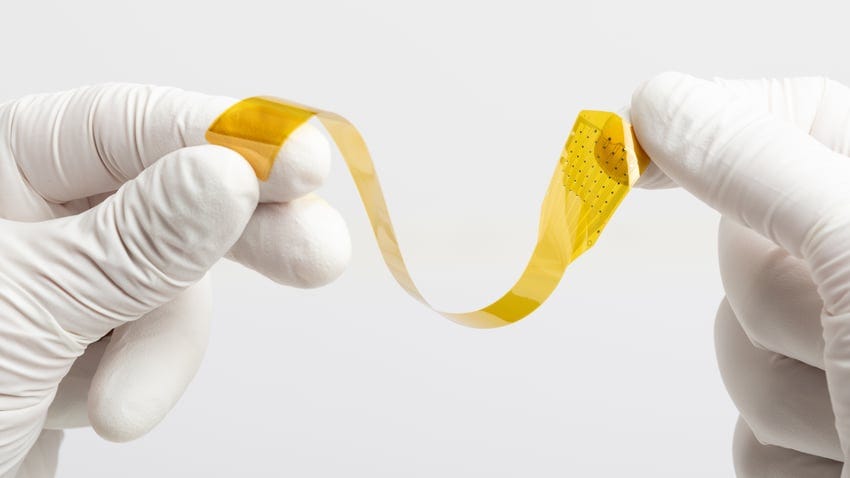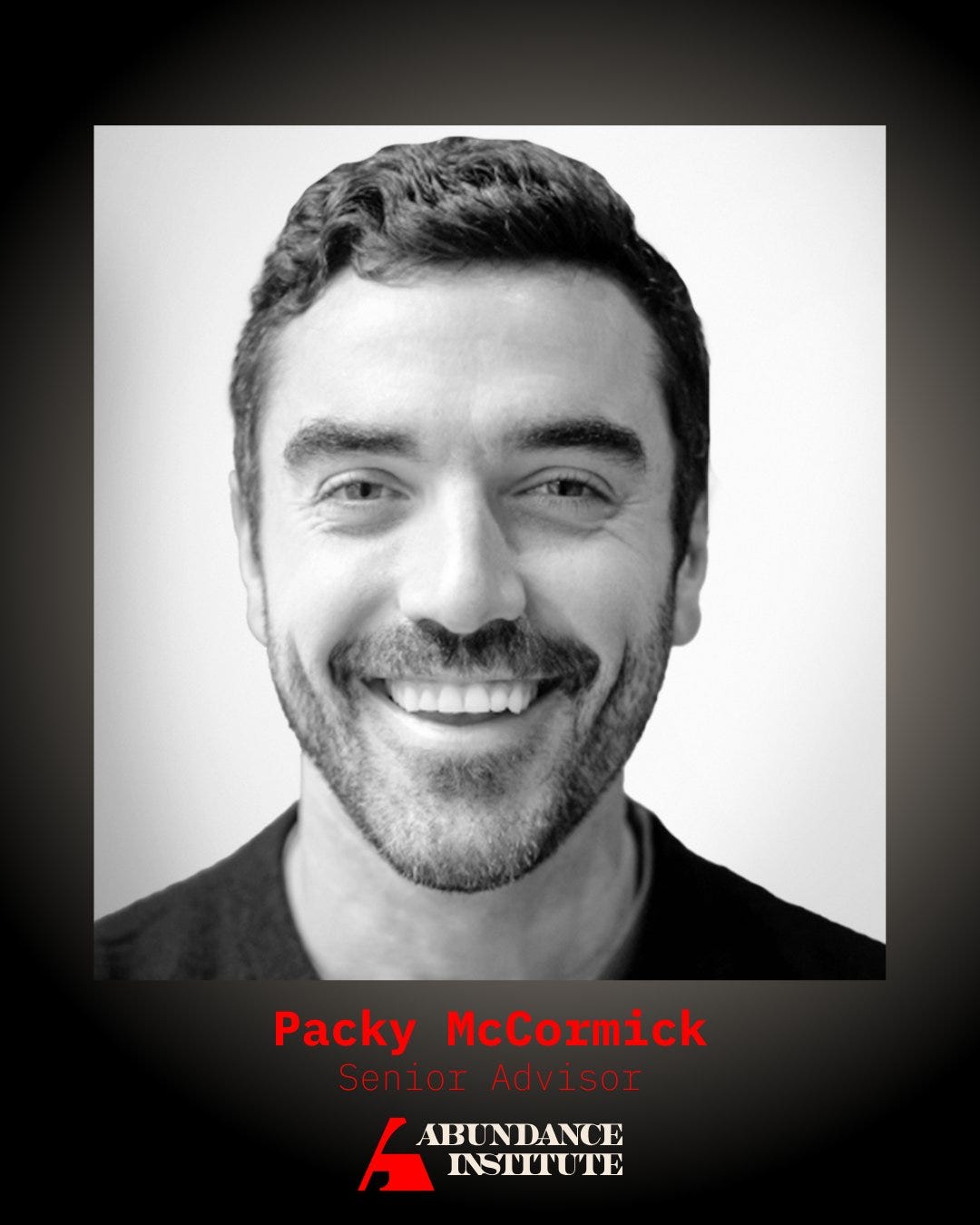Weekly Dose of Optimism #140
K2-18b, o3 and o4-mini, Parkinson’s Research, GLP-1 Pill, Precision, Neuroscience, Abundance Institute
Hi friends 👋,
Happy Friday and welcome back to our 140th Weekly Dose of Optimism. And an early Happy Easter to our Christian readers. We don’t cover any tech this week that can bring the dead back to life…but honestly, some of this stuff isn’t all that far off.
Let’s get to it.
(1) Deciphering Sub-Neptune Atmospheres: New Insights from Geochemical Models of TOI-270 d
Glein et al
The evaluation presented here demonstrates that exoplanetary geochemistry now approaches a level of sophistication comparable to that achieved within our own solar system.
Amid all the daily chaos—tariffs wrecking markets, planes falling from the sky—I try to zoom out and remember how tiny we really are. We’re a mote of dust suspended in a sunbeam, as Carl Sagan once said. But not just any mote: we’re the living one. The special one. Or…so we thought.
Astronomers studying a distant planet, K2-18b, just found something remarkable: dimethyl sulfide in its atmosphere. On Earth, this molecule is only produced by living organisms, mostly marine plankton. That makes it a possible biosignature: a chemical hint that life might exist elsewhere.
K2-18b orbits a red dwarf star 120 light-years away and belongs to a weird class of planets called "sub-Neptunes,” bigger than Earth, smaller than Neptune, with no equivalent in our solar system. Some scientists think certain sub-Neptunes could be “Hycean worlds”: planets with warm oceans and hydrogen-rich atmospheres.
Using the James Webb Space Telescope, scientists analyzed the starlight filtering through K2-18b’s atmosphere as it passed in front of its star. The light spectrum revealed a strong, repeated signal of dimethyl sulfide, far stronger than anything found on Earth. They also found methane and carbon dioxide, which fit the Hycean theory.
Of course, this doesn’t mean aliens are splashing around just yet. The planet could still be a rocky hellscape with a thick, toxic atmosphere. More data is needed, and lab tests must confirm whether dimethyl sulfide can be formed by other, non-living processes out there. Still, it’s the clearest whiff of life we've ever picked up outside our solar system. A potential sign that we’re not the only living dust in the beam.
(2) Introducing OpenAI o3 and o4-mini
From OpenAI
Today, we’re releasing OpenAI o3 and o4-mini, the latest in our o-series of models trained to think for longer before responding. These are the smartest models we’ve released to date, representing a step change in ChatGPT's capabilities for everyone from curious users to advanced researchers.
OpenAI introduced seemingly incremental but actually impressive new AI models earlier this week. These models, o3 and o4-mini, are smarter, faster, and better at using tools like web search, Python, and image analysis together, agentically, and with judgment. Crucially, these models think before they act, solve problems step-by-step, use tools strategically, and format outputs intelligently.
To be fair, none of that seems groundbreaking and the improvements may not be super detectable by the untrained eye. But in practice, and after a couple of days of using the new models, the advancements are significant in how I use ChatGPT. These models can handle complex problems, use a variety of tools to help solve those problems, and the outputs are (from what I can tell) very accurate. Simply put, the models just seem to be working harder and more thoughtfully to give me answers.
The hype around these launches were somewhat overshadowed by the news that OpenAI is in talks to acquire AI coding tool Windsurf for $3B. The move makes sense to me. OpenAI gets a red hot developer tool at a decent valuation and Windsurf gets $3B and doesn’t get crushed by a potential major rollout of an OpenAI AI coding tool.
Packy note: I have been fairly skeptical of a lot of the AI hype. I am hyped on o3. It’s only been a couple of days, but it really does feel like it will dramatically improve how I work. I’ve had it do analyses on complex businesses for the fund and asked it to do research for essays I’m working on, and in both cases, it feels qualitatively much stronger than before. I gotta admit, I kind of feel the AGI.
(3) ‘Big leap’ for Parkinson’s treatment: symptoms improve in stem-cell trials
Smriti Mallapaty for Nature
Two hotly anticipated clinical trials using stem cells to treat people with Parkinson’s disease have published encouraging results. The early-stage trials demonstrate that injecting stem-cell-derived neurons into the brain is safe1,2. They also show hints of benefit: the transplanted cells can replace the dopamine-producing cells that die off in people with the disease, and survive long enough to produce the crucial hormone. Some participants experienced visible reductions in tremors.
In a major step forward for Parkinson’s research, two new studies tested whether injecting lab-grown dopamine-producing neurons into the brain can safely replace those lost to the disease. Trials in the U.S., Canada, and Japan used stem cells to generate dopamine neuron precursors, which were transplanted into the putamen, a key motor-control area in the brain. In both trials, many patients showed mild-to-moderate improvements in motor function, especially those receiving higher doses, and brain scans confirmed increased dopamine activity in key regions. Importantly, the treatment was found to be safe, with no serious side effects or tumor growth.
Over 10 million people worldwide have Parkinson’s, and unfortunately that number is expected to double by 2040. The disease is hard to cure because it involves the gradual, irreversible loss of dopamine-producing neurons deep in the brain and these are cells the body can’t naturally replace. It also progresses differently in each person and affects both motor and non-motor functions, making treatment even more complex.
Current treatments help manage symptoms but don’t stop or reverse the disease but cell therapies like the one above, are one of the first real attempts to change that.
(4) Daily Pill May Work as Well as Ozempic for Weight Loss and Blood Sugar
Gina Kolata for The New York Times
A daily pill may be as effective in lowering blood sugar and aiding weight loss in people with Type 2 diabetes as the popular injectable drugs Mounjaro and Ozempic, according to results of a clinical trial announced by Eli Lilly on Thursday morning.
GLP-1s are a good thing. Whether you like a society that requires the proliferation of GLP1-s is another question. But GLP-1s are good. They help with weight-loss, blood sugar regulation, cardiovascular health, and potentially a whole swath of other health areas. The fact that we have GLP1-s today, in any form, is a miracle. They’re the result of serendipitous research, trial and error, and repurposing.
But today, the most popular and effective GLP-1s are injectable and expensive. That limits how many people can benefit from the drugs. However, a more convenient and cost effective solution may be on the way in the form of GLP-1 pills.
Eli Lilly announced promising results from a clinical trial of orforglipron, an oral GLP-1 drug, showing it is as effective as its injectable brethren in lowering blood sugar and aiding weight loss. In the trial, participants saw similar reductions in blood sugar and weight loss, with up to 16 pounds lost over 40 weeks. Unlike injectable GLP-1s, the pill can be taken without refrigeration, making it more accessible and potentially less expensive.
Man, we’re all going to be so skinny and smart.
(5) FDA clears Precision Neuroscience’s minimally invasive brain-computer interface implant
Conor Hale for Fierce Biotech
Precision Neuroscience has obtained an FDA clearance for a crucial piece of its plans for a full brain-computer interface system, starting with its minimally invasive cortical electrode array. The company described it as the first regulatory green light for a developer of wireless mind-reading tech.
“The first regulatory green-light for a developer of wireless mind-reading tech” is a cool thing to read and a cool thing for humanity. Here’s what it means: Precision Neuroscience was awarded FDA clearance for its Layer 7 cortical interface, a paper‑thin, 1,024‑electrode film that slides through a microscopic slit, rests on the brain’s surface for 30 days, and both reads and stimulates neurons. The clearance allows the company to deploy the device immediately for ultra‑high‑resolution brain mapping during open surgeries. And, importantly, more deployment means more data collection, which will ultimately make the AI systems that underpin the system much smarter. The plant is only deployed on 37 patients, but getting learnings from thousands of patients in need will make the AI much smarter.
Precision is trying to crack this flywheel: more implants → more neural data → smarter algorithms and BCIs go from surgical tool helping in-need patients to massive platform powering paralysis recovery, mood disorders, and hands-free computing.
BREAKING: Packy McCormick Joins Abundance Institute as Senior Advisor
I’ve been blessed to be in this position, to be a free agent, to have the opportunity to make this decision. And I feel like I’ve made the right decision. I’m going to take my optimism to the internet and join the Abundance Institute. -Packy McCormick (via LeBron)
Packy here. Earlier this week, the Abundance Institute announced that I’m going to be joining them as a Senior Advisor. If you’ve been reading the Weekly Dose, that shouldn’t come as a surprise: we’ve included their work a bunch of times, including bangers like Nanotechnology: A Primer for Policymakers by Where is My Flying Car? author J. Storrs Hall, an Abundance Institute Fellow.
For those who are unfamiliar, the Abundance Institute is a mission-driven nonprofit focused on creating space for emerging technologies to grow, thrive and have a chance to reach their full potential. It does this by supporting and assembling talent, community building, and shaping public policies before emerging technologies go mainstream. If you’re wondering why I teamed up with them, spend a couple of minutes on their website and I think you’ll understand.
Simply put, there’s no organization out there that’s fighting as hard or as smart for the types of technologies and companies that I think can help us get to an Age of Miracles than the Abundance Institute. As one example, they are driving a lawsuit brought by states like Utah and Texas and companies like Last Energy, Valor Atomics, and Deep Fission against the Nuclear Regulatory Commission (NRC) to require the NRC to follow federal law and allow state authorities to regulate small modular reactors (SMRs). As another, when I went down to Texas to watch (Abundance Institute Fellow) Jason Carman’s excellent Too Cheap to Meter Frontier Film, Abundance was the one supporting the film.
Over the past year or so, I kept running into Abundance Institute CEO Chris Koopman at future-related events. During the 47g conference in Utah, we spent more than an hour walking around Salt Lake City talking about Abundance’s work while he spliced in SLC history lessons. We’ve kept the conversation going, and with each new thing that he told me they’re working on, I got more and more excited.
So a few weeks ago, when he asked me if I’d be interested in getting involved, it was an easy yes. The pitch was something like: “You talk to a lot of companies doing the type of work we’re interested in. If they tell you about blockers we might be able to help with, let us know, and we’ll figure out how to help.” No brainer.
One of the big lessons I took from our season of Age of Miracles on nuclear was that technology is like half the battle. Whether a technology, and the people behind it, is able to live up to its potential to make the experience of being human more awesome often comes down to a host of cultural, political, and regulatory factors that are outside of their control. Abundance Institute exists to help with those factors.
I’m psyched to have the opportunity to help them fight the good fight and unblock the future for the types of companies we write about and invest in at Not Boring and right here in the Weekly Dose.
Abundance is on the lookout for more optimists to bring onboard, and this seems like the perfect place to find them. If you’re interested, reach out to Chris on X. And if you just like a good day of conversation and a fancy party, I’ll be on a panel at Abundance’s 1-year Gala on May 19th: apply to join us at the Policy Summit and/or Gala.
Have a great weekend and Happy Easter y’all.
We’ll be back in your inbox next week.
Thanks for reading,
Packy + Dan







That Parkinson's treatment would be...amazing.
Haha, I read the subject too fast and assigned K2-18b to the (in my head) AI system that is going to help make every new student better by following them while they grow. It helps teachers by liberating resources from them an teaching the curriculum at a faster pace. It helps the students by learning how they learn and accelerating their knowledge consumption. It helps us because Literacy Matters, and because we need more engineers and less influencers.
In any case, congrats on the senior advisor position. Well deserved.